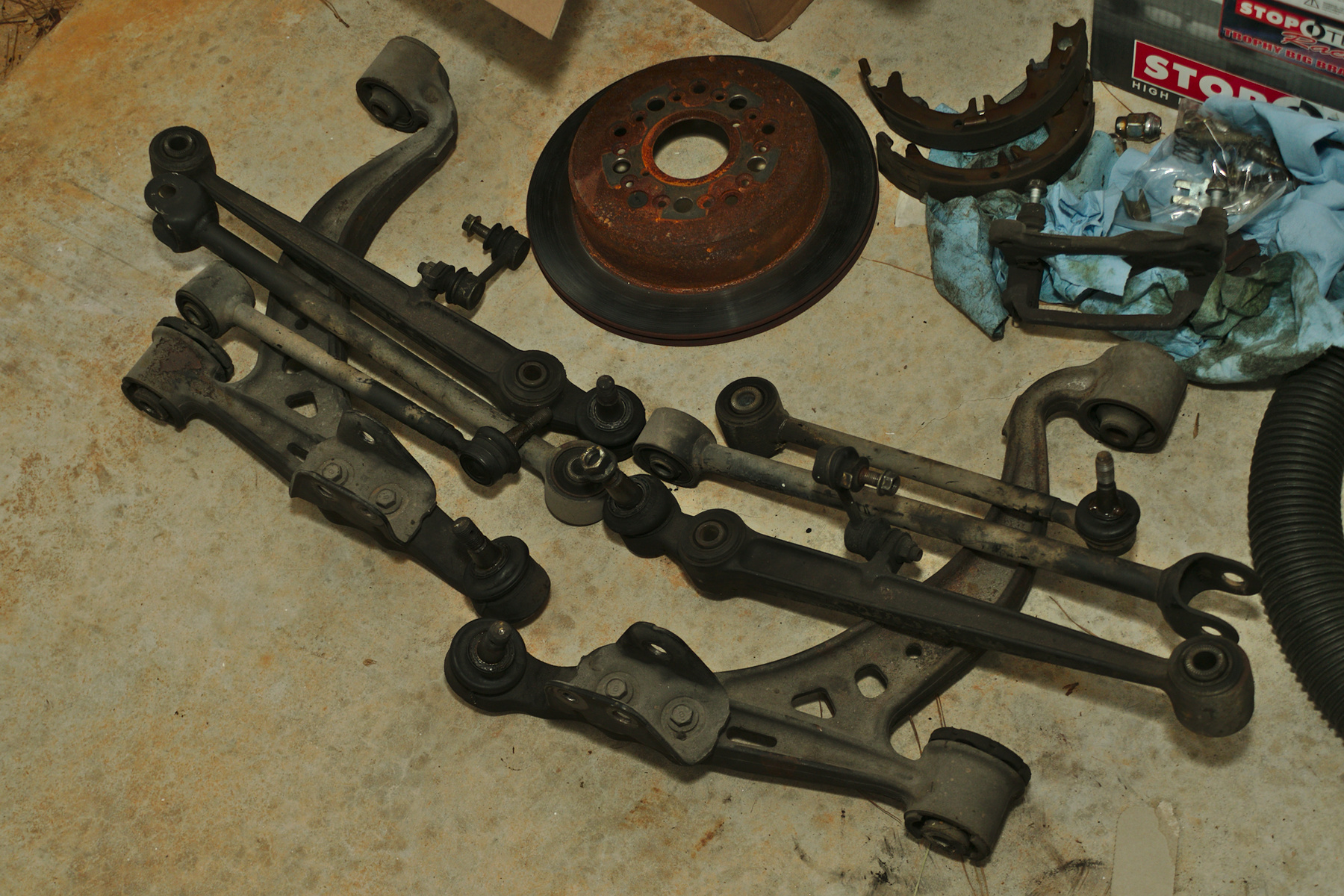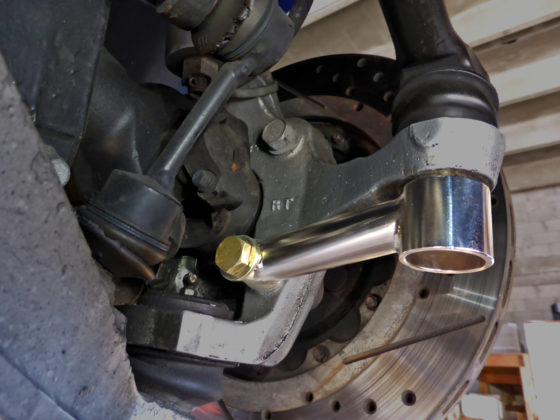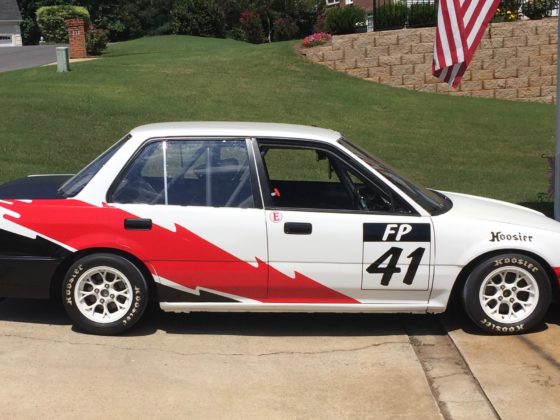
It also couldn’t hurt to get rid of the OE-style closed-end lugnuts.

The SC300 is a sports coupe, but in North America it was essentially a luxury car. It got a decent 2-piston front caliper that, when paired with aggressive pads and ducting, could probably get the job done. With double the horsepower at the wheels, extended sessions at brake-hard tracks might have caused some trouble. That being said, there’s a balance between pad aggressiveness, rotor wear, heat dissipation, tire grip, and other factors.
Could the OEM caliper be made to work? Maybe.
Could something like a Supra TT or other OEM upgrade work? Sure.
But we decided long ago to stop tip-toeing around and to do a full race car build. So full race car brakes were called for.

There’s two 14mm bolts that hold the caliper to the caliper bracket, and then two 17mm or similar bolts that hold the caliper bracket to the knuckle. If you didn’t get your brakes done at the local quick lube place, you probably won’t need much effort to get either of these bolts off. Your life will be easier if you undo the caliper-bracket bolts and then pop the caliper and remove the pads first. Common sense is not so common.

It’s amazing how many options there are for extremely powerful electric tools these days. I should have gone with the ¾” direct-drive Milwaukee impact, but, then again, sometimes not being able to blast a bolt with 1200lbs of force means you don’t break things. This little guy is good enough for most jobs.
With the caliper off and the pads out, the caliper bracket can be removed, followed by the rotor.




6 comments
This is real garage work, not your fancy Discovery Channel scripted stuff. Nice work!
You shouldn’t reuse hubs, they are just as much a wear item as the bearings.
@Mikhael – which part of the hub is a wear item? It rests inside the bearing / rides on the bearing.
Metal fatigue, I’ve seen hubs and bearings both let go on track cars. It’s also usually very difficult to remove the stuck on inner race without damaging the hub. Even if you do a lot of the time the hub is scored and scratched in the process and you risk spinning the hub inside the race once it’s installed.
Good points. I didn’t notice any issues with the hubs. The fronts were very clean and the rears are splined. We’ll see how it goes, I guess!
Pff, I’ve been running good tight junkyard hubs on my road race Camaro for years. It’s about a grand to upgrade to to the Corvette SKF hubs with the adapters. You’ll know when they’re bad, and if they were good last time out no need to waste money. They’re not going to suddenly explode and send you into the wall down the back straight at Road America. As far as popping ball joints with a hammer, it also works very well to just bash on the knuckle itself while leaving the nut loosely on. I rarely use a separator anymore, so much faster and easier to give it a few whacks and the boots and everything are reusable too. You’re definitely spending more than I would, but it should turn out like a show piece in the end. You gonna go with sphericals in the control arms?